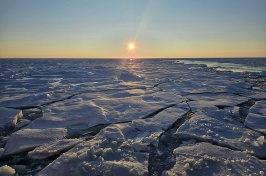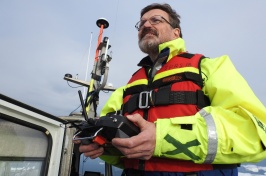Study Shows Corals Can't Escape Warming Water But Urgent Action Could Protect Them

DURHAM, N.H.—A new study by researchers at the University of New Hampshire and University of Hawaii’s Hawaiʻi Institute of Marine Biology (HIMB) Marine Ecological Theory Lab reveal that coral reefs are creeping toward both the North and South poles in response to warming oceans, but the pace is too slow to threatening their survival. However, the study also shows that immediate action to reduce greenhouse gas emissions could significantly improve the future outlook for coral reefs globally.
The breakthrough paper, published in Science Advances, outlines how the team turned to sophisticated simulation models and used software created at UNH, called EZfate, to predict changes in coral reef distributions.
“We wanted a publicly available software program that could easily take lots of bulky information and create something that any biologist could enter data to answer these important questions of where the water goes and how it affects the life within it – in this case coral larvae,” said James Pringle, professor of Earth Sciences at UNH and co-author on the paper.
The team used the EZfate to design a global simulation model that included roughly 50,000 coral reef sites, incorporating processes essential to coral reef health, such as how corals grow, disperse, evolve, and adapt to heat stress. They included experimental data and then tested three future emissions scenarios: low warming (~2℃ by 2100), moderate warming (~3℃), and high warming (>4℃).
“We discovered that it takes centuries for tropical-type coral reefs to expand significantly beyond their current distribution,” said Dr. Noam Vogt-Vincent, a NOAA climate & global change postdoctoral fellow at HIMBʻs Marine Ecological Theory Lab and lead author of the study. “It was previously suggested that tropical coral species might be able to find ‘refuge’ in subtropical and temperate seas by expanding poleward and establishing new, higher latitude coral reefs. Unfortunately, while we've confirmed that coral reef range expansion will indeed eventually occur, the biggest coral losses are expected in the next 50 years, meaning these new, higher-latitude reefs won't form fast enough to save most tropical corals."
Researchers say places like northern Florida, southern Australia and southern Japan might eventually see new reefs, but not soon enough to help many tropical coral species survive the 21st century.
“When we started this study we didn’t have any expectations either way but once when we were finished we had some concern because the coral we thought might be inhabitable and find refuge in subtropical areas may not have the time to do that,” said Pringle. “It is a slow-moving crisis.”
But researchers say the study also found some good news. The study shows that significant cuts in greenhouse gas emissions, like those outlined in the Paris Climate Agreement, could dramatically reduce coral loss. Instead of losing a further 70% of coral reefs, action now could limit the loss to around 30%. This finding underscores the critical importance of urgent human action.
"Our findings show that coral reefs are not a lost cause, but immediate and significant reductions in greenhouse gas emissions are essential for mitigating the damaging effects on our reefs," Vogt-Vincent stresses. "In fact, our study suggests that reductions in greenhouse gas emissions will not just improve coral reef futures this century, but for hundreds to thousands of years into the future. Our actions over the next few decades will therefore have incredibly long-lasting consequences for coral reefs globally."
The team plans to continue their modeling to better understand the threats and possible solutions for coral reefs around the world. Future research directions include developing more sophisticated genetic simulations to understand coral larval dispersal. They are also exploring how naturally cooler parts of coral reefs might create local conditions for coral survival.
This research was funded by NOAA through UCAR's Cooperative Programs for the Advancement of Earth System Science (CPAESS) and the National Science Foundation through the University of New Hampshire. Other co-authors include Lisa McManus, assistant research professor at HIMB and Chris Cornwall, Victoria University of Wellington.
EZfate is publicly available at https://github.com/JamiePringle/EZfate.
About UNH:
The University of New Hampshire inspires innovation and transforms lives in our state, nation and world. More than 16,000 students from 50 states and 87 countries engage with an award-winning faculty in top-ranked programs in business, engineering, law, health and human services, liberal arts and the sciences across more than 200 programs of study. A Carnegie Classification R1 institution, UNH partners with NASA, NOAA, NSF, and NIH, and received over $250 million in competitive external funding in FY24 to further explore and define the frontiers of land, sea and space.
Latest News
-
June 25, 2025
-
June 16, 2025
-
June 6, 2025
-
May 15, 2025
-
May 14, 2025















































